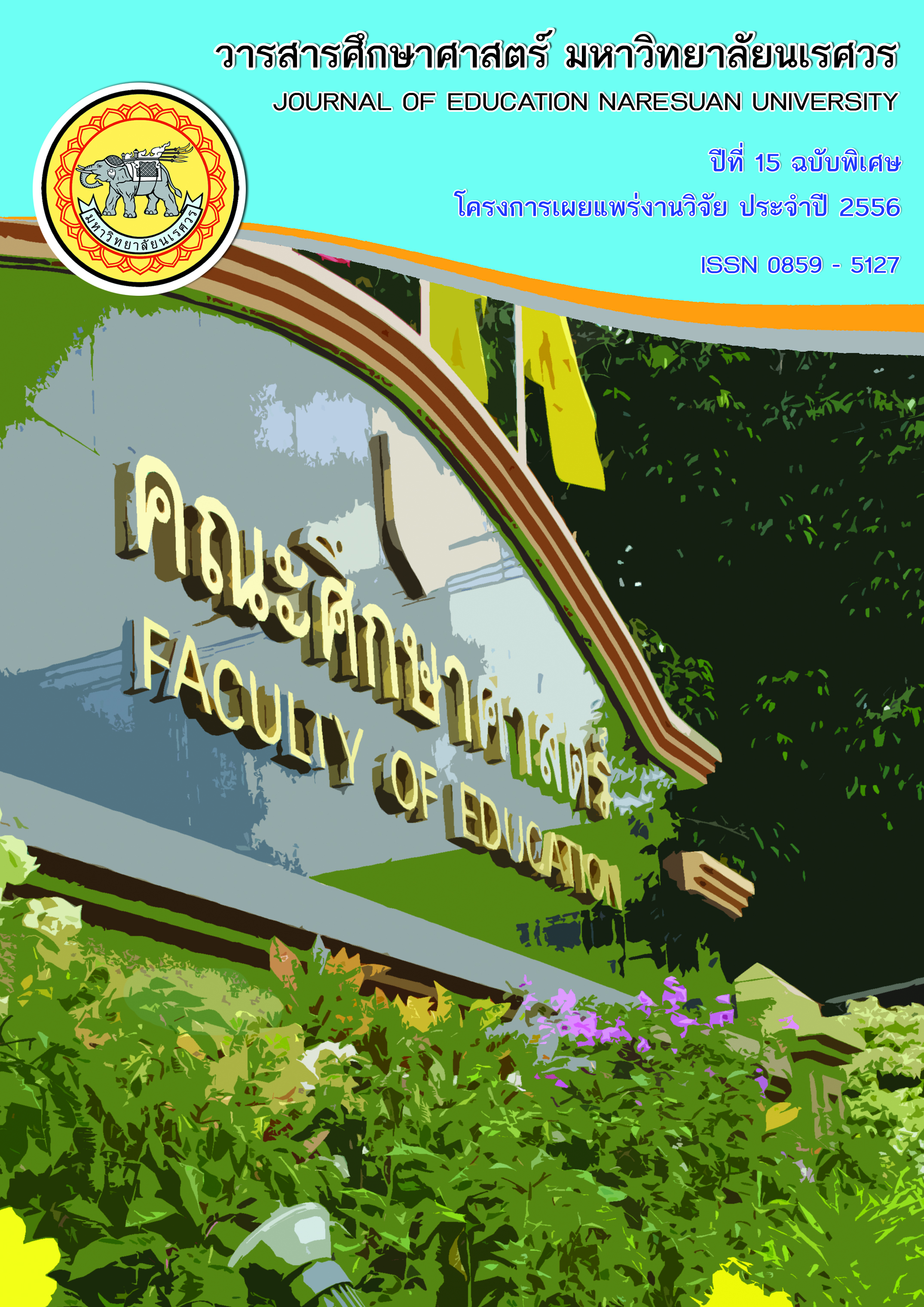รูปแบบการบริหารสถานศึกษาเพื่อเสริมสร้างคุณลักษณะธรรมาธิปไตย ของนักเรียนระดับมัธยมศึกษา
Main Article Content
Abstract
บทคัดย่อ
การวิจัยครั้งนี้มีวัตถุประสงค์เพื่อสร้างรูปแบบการบริหารสถานศึกษาเพื่อเสริมสร้างคุณลักษณะธรรมาธิปไตยของนักเรียนระดับมัธยมศึกษาโดยมีขั้นตอนการวิจัย ดังนี้ 1) ศึกษาคุณลักษณะธรรมาธิปไตย และแนวทางการเสริมสร้างคุณลักษณะธรรมาธิปไตยของนักเรียนระดับมัธยมศึกษา เก็บรวบรวมข้อมูลโดยการสังเคราะห์เอกสาร สัมภาษณ์ผู้ทรงคุณวุฒิ และศึกษาสังเกตโรงเรียนระดับมัธยมศึกษาที่มีวิธีปฏิบัติที่ดี ด้านคุณธรรม 2) สร้างรูปแบบฯโดยสังเคราะห์เนื้อหาคุณลักษณะธรรมาธิปไตย และแนวทางการบริหารสถานศึกษา จากข้อมูลในขั้นตอนที่ 1 ยกร่างเป็นรูปแบบ และตรวจสอบความเหมาะสมของรูปแบบโดยการจัดสนทนากลุ่ม 3) ประเมินรูปแบบฯโดยจัดประชุมผู้ใช้รูปแบบฯ รวบรวมข้อมูลโดย ใช้แบบประเมินรูปแบบฯ วิเคราะห์ข้อมูลโดยการใช้ ค่าร้อยละ ค่าเฉลี่ย ค่าเบี่ยงเบนมาตรฐาน
ผลการวิจัย พบว่า
1. คุณลักษณะธรรมาธิปไตยของนักเรียนระดับมัธยมศึกษา ได้แก่ 1) มีสติ (คิดดี) 2) มีปัญญา (รู้ดี) 3) มีธรรม (ทำดี) มีแนวทางการเสริมสร้างคุณลักษณะธรรมาธิปไตย คือ 1) การนำสภาพแวดล้อมภายนอกเข้ามาร่วมในการเสริมสร้าง 2) การมีคณะกรรมการเครือข่ายพัฒนาคุณธรรมนักเรียนคอยขับเคลื่อน 3) การกำหนดอัตลักษณ์ธรรมาธิปไตย เป็นเป้าหมายในการ พัฒนาครู พัฒนาสภาพแวดล้อม และพัฒนานักเรียน
2. รูปแบบฯ ประกอบด้วย 4 องค์ประกอบ ได้แก่ 1) ความร่วมมือเครือข่ายภายนอก 2) ปัจจัยนำเข้า ได้แก่คณะกรรมการเครือข่ายพัฒนาคุณธรรมนักเรียน 3) กระบวนการ ได้แก่ การกำหนดอัตลักษณ์ธรรมาธิปไตยเป็นเป้าหมายในการพัฒนาครู พัฒนาสภาพแวดล้อม และ พัฒนานักเรียน 4) ผลผลิต ได้แก่ คุณลักษณะธรรมาธิปไตย คือ มีสติ (คิดดี) มีปัญญา (รู้ดี) และมีธรรม (ทำดี)
3. ผลการประเมินรูปแบบฯ ผู้ใช้รูปแบบฯ มีความคิดเห็นว่ารูปแบบฯ มีความเป็นไปได้ และมีประโยชน์ในการนำไปใช้ในระดับมากที่สุด
คำสำคัญ: คุณลักษณะธรรมาธิปไตย/ การเสริมสร้างคุณลักษณะธรรมาธิปไตย/ รูปแบบการบริหารสถานศึกษา
Abstract
The objective of this research was to create the model for promoting the secondary school student’s Dhammadhipateyya characteristics. The research methodology had been divided into 3 phases. The first phase was to study the secondary school student’s Dhammadhipateyya characteristics through literature review and also conducting an interview with selected experts. Second phase was to create the model for promoting the secondary school student’s Dhammadhipateyya characteristics based on the information collected from the first phase. The final phase of this research was to evaluate the feasibility of the proposed model with a group of potential model adopters. The results are as follows:
1. The secondary school student’s Dhammadhipateyya characteristics are 1) the ability to think by using consciousness, 2) knowledge and 3) the ability for decision making based on Dhamma. The guidelines for promoting the secondary school student’s Dhammadhipateyya characteristics were 1) the integrating of external environment to promote student’s Dhammadhipateyya characteristics, 2) setting up the comittee designated for students etichs developement, and 3) defining an objective for developing the teacher, student and learning enviroment according to Dhammadhipateyya.
2. There are 4 components of the management model for promoting the secondary school student’s Dhammadhipateyya : 1) External environment 2) Internal Environment 3) The Administrative procedures 4) The outcome.
3. The result from the evaluation, according to the potential adopters, suggests a very high level of both usefulness and feasibility
Key words: Dhammadhipateyya Characteristics/Dhammadhipateyya Promoting/ The School Management Model
Article Details
The owner of the article does not copy or violate any of its copyright. If any copyright infringement occurs or prosecution, in any case, the Editorial Board is not involved in all the rights to the owner of the article to be performed.


